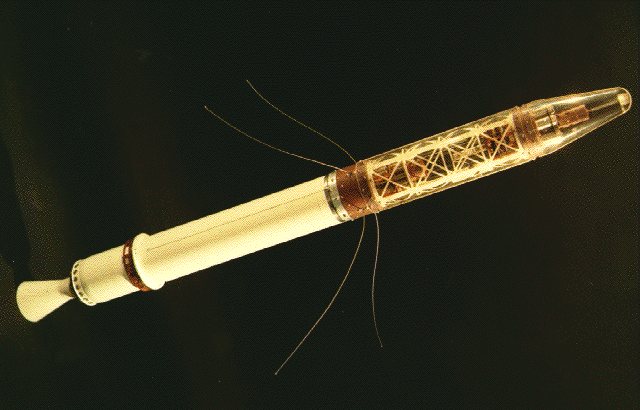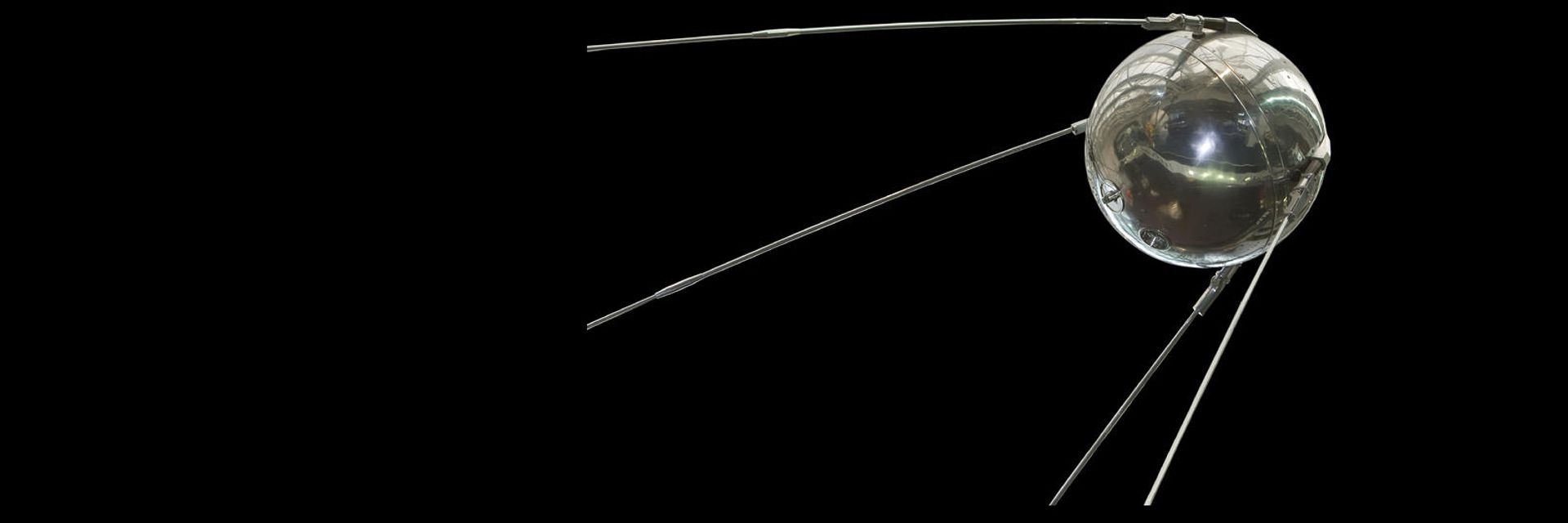The Soviets took an early lead, but the U.S. caught up and surpassed them in the Space Race.
◊
By the end of World War II, both the United States and the Soviet Union recognized the crucial role rocket technology was likely to play in the impending Cold War. The first successful military applications of such weapons had come to fruition with Germany’s use of rocket-powered V2 missiles. Both sides of the new geopolitical divide launched research and development programs using German scientists and engineers who had surrendered or been captured in the closing days of the war.
The biggest prize in this competition for expertise was the leader of the V-2 program, Wernher von Braun, who, with a large cohort of his colleagues, surrendered to U.S. troops only days before the fighting ended in Europe. But, while von Braun was to play a pivotal role in the development of the American space program, the Soviets gained the early upper hand in what became known as the Space Race.
For more on the space race, check out the MagellanTV documentary Battle for the Moon.
The Space Race as Geopolitical Theater
In the first years of the Cold War, both Western and Soviet policymakers were primarily interested in rockets for their military potential. However, in the 1950s, American and Soviet leaders recognized that rocket development could also be a powerful ideological tool.
In the 1950s, Soviet leader Nikita Khrushchev pushed to make sending satellites and cosmonauts into space – and eventually to the Moon – a feature of the Cold War geopolitical struggle. The U.S. had gotten Wernher von Braun and his fellow scientists, but the U.S.S.R. had a vigorous program of its own involving captured German scientists. In fact, the Soviets were farther along than the Americans believed possible.
The Soviet Union Launches a Surprise
In October 1957, to the surprise and dismay of American leaders, the Soviet Union announced it had placed its Sputnik satellite into orbit, becoming the first nation to do so. President Dwight D. Eisenhower was none-too-pleased with this historic development. After all, the U.S. was supposed to be at the forefront of technological advances.
In the Space Race, time was of the essence, and the U.S. was now playing catch-up. It launched its first satellite, Explorer 1, in January 1958. Perhaps more important in the long run, though, Eisenhower established the National Aeronautics and Space Administration (NASA) to organize and oversee America’s efforts in the quest to dominate space – and, not just coincidentally, to win the Cold War.

Explorer 1 satellite, with launch vehicle’s fourth stage attached.(Credit: NASA, via Wikimedia Commons)
JFK Makes It a Race to the Moon
Perhaps what was most needed, from the U.S. point of view, was vigorous new political leadership. That arrived, in 1961, with the inauguration of John F. Kennedy as president.
JFK dramatically escalated the American commitment to the Space Race. In one of the most famous speeches of his presidency, he set the goal of landing a man on the Moon – and returning him safely to Earth – by the end of the 1960s.
To this end, Kennedy significantly increased NASA’s budget. He also used the space program to inspire the nation and garner public support. His leadership and rhetoric were instrumental in mobilizing public and political support for the Apollo program.
Despite a tragic disaster and delays, NASA made good on President Kennedy’s audacious vision when Apollo 11 landed two American astronauts on the Moon in July 1969. Soviet cosmonauts never got there.
Ω
Title Image: Sputnik satellite (Credit: Carlos Moreno Rekondo, via Wikimedia Commons)

